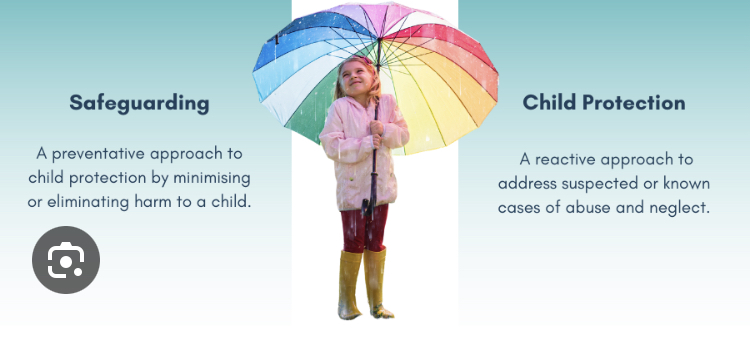Child safeguarding refers to a set of policies, procedures and practices employed to make an environment conducive and well - habitable for every child. Child protection is about making the world safe for children. It refers to actions done to protect specific children from concerns of risk or harm. Child protection is about making the world safe for children. It refers to actions done to protect specific children from concerns of risk or harm.
Safeguarding and child protection are not just legal requirements but moral and ethical imperatives. Every child deserves to grow up in an environment free from harm, where their physical, emotional, and psychological well-being is prioritized.
Understanding the signs of abuse is crucial for effective safeguarding and child protection. Abuse can take various forms, including physical, emotional, psychological, and sexual abuse. Recognizing these signs enables early intervention and support for victims.
A. Physical Abuse: This can manifest in the form of unexplained injuries or bruises on a child's body. It may also be indicated by changes in a child's behaviour, such as withdrawal, fear, or aggression.
B. Emotional and Psychological Abuse: Emotional abuse often leaves no visible scars but can be equally damaging. Signs include constant criticism, belittling, and a noticeable decline in a child's self-esteem.
C. Sexual Abuse: Recognizing signs of sexual abuse can be particularly challenging. Look for unusual sexual knowledge or behaviour in your child and pay attention to their emotional and physical well-being.
III. Preventing Child Abuse
Preventing child abuse is a vital part of our role as Christian mothers. It is a collective responsibility that begins in our homes and communities. Here are some key steps:
A. Establishing a Safe Environment: Childproof your home, create open lines of communication, and ensure your children feel safe to confide in you.
B. Setting Boundaries: Teach your children about personal boundaries and the concept of safe and unsafe touches. Promote the importance of respecting boundaries within the family.
C. Educating Your Children: Engage in age-appropriate conversations about abuse and encourage your children to share their concerns with you. Knowledge is a powerful tool in protecting them.
The 5 P's of child protection are: Prevention, Paramountcy, Partnership, Protection and Parental Responsibility.
It's crucial to know how to respond if you suspect abuse:
A. How to Approach a Child: Approach them with love and understanding. Listen attentively and assure them of your support and confidentiality by offering a safe and non-judgemental space for them to share their concerns.
B. Reporting Suspected Abuse: Understand that it is not only a moral but often a legal obligation to report abuse. Be prepared to report to the relevant authorities or church leaders, if necessary, as this ensures that the child receives the support and protection that they need.
The Role of Society in Safeguarding Children
Safeguarding children is not the sole responsibility of parents or caregivers but a duty shared by society as a whole. Communities, schools, religious institutions, and governments must collaborate to create an environment where children are safe, nurtured, and protected. This collaboration includes developing and enforcing laws and policies that prioritize child protection, as well as providing resources for survivors and their families.
